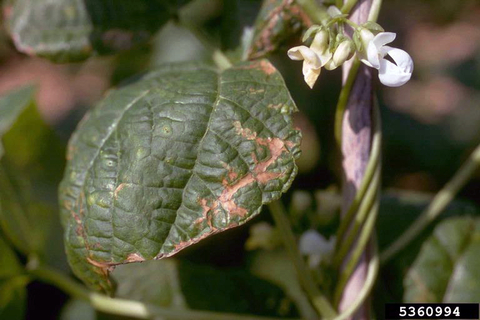This week’s cooler weather has gotten a lot of people back out in their gardens after a scorching July. Reports are coming in of bleached spots on vegetables and fruits. While gardeners often assume this is due to some sort of blight, it is most often due to a problem many people are familiar with on the human side — sunburn (in plants, it is called sunscald).
As people harvest crops like tomatoes, peppers, cucumbers, squash, raspberries, pumpkins, and even apples, sometimes we find fruits that are bleached and breaking down. Horticulturists call this sunscald, and it is caused by the fruit being exposed to intense summer sun.
The intense sunlight causes cells to die and break down. These areas start off bleached white, but then decay and turn brown or black as microorganisms move into the damaged area.
Apples are a little bit more resistant to sunscald, so the damage often appears brown. The damaged spots will line up with gaps in the foliage.
We can also see heat damage on leaves. It's a common sight in some green bean plantings right now. This damage can appear as bleaching or browning and can be hard to diagnose. The damage typically is minor and ends up being more cosmetic than anything else.
Why now?
Why might you be seeing sunscald now when you haven’t seen it in the past or in earlier harvests? Think about how healthy your plants are and how weather or human actions may have moved leaves around.
I have noticed especially bad patches of sunscald in my own garden zucchini. Thinking back, I realized the intense winds and some careless harvesting in the first week of August shifted and damaged the foliage that was previously covering my zucchini flowers and fruit, and the developing fruit that were newly exposed to the sun all suffered damage and are now rotting.
So what is a gardener to do? We can’t apply SPF 30 to our plants! But we can be thoughtful about caring for our plants.
- Be careful when pruning, staking and tying. Removing foliage that is covering fruits can expose them to intense light they aren’t used to.
- Look out for signs of nutritional deficiencies and amend as necessary. This will promote a healthy, full canopy that can protect developing fruit.
- Avoid watering leaves, instead, apply water to the soil. Keeping leaves dry helps prevent disease, and leaves are key in shading fruit.
- If your plant’s leaves are dying before the fruit looks ripe, refresh yourself on what vegetables continue to ripen after picking.
- Shade cloths are the best quick fix.
- If there are certain plants with lots of sunscald, try a different variety next year. Some varieties of vegetables are leafier than others, and the extra leaves help protect fruit.
- Remove damaged fruits so the plant directs its energy into remaining healthy fruit.




